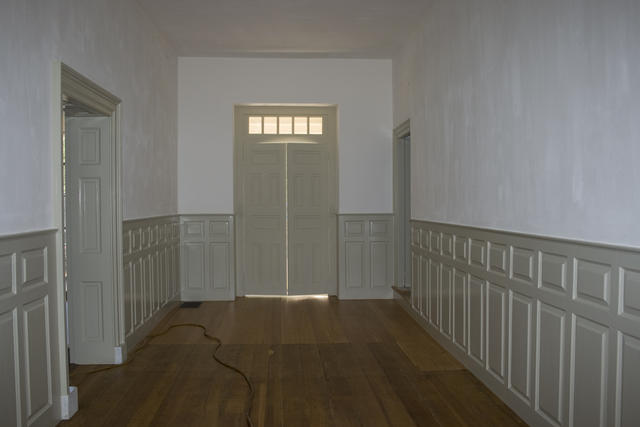
As a result of the investigation it was also found that unlike many grand houses of the colonial and early-republic period the ca. 1764 stair at Montpelier was contained in a separate room and was not visible from the main passage. The reason Madison’s father enclosed the stair in a separate space is not known, but it may reflect his attempt to replicate similar buildings found elsewhere in Virginia. Alternatively, by removing the stair from the Passage, Madison Sr. may instead have intended to create a large, completely open central passage that could function more efficiently as a social space. A final interpretation could also be that the stair reflected Madison Sr.’s desire to create a grand, yet still simple and functional house. The enclosed stair, which were very common in lower status houses, would have required much less detailed trim work, less craftsmanship and much simpler framing, all of which would have made the stair less expensive to build.

©The Montpelier Foundation
|
|
The restored South Passage at Montpelier as it would have looked in ca. 1812. |












